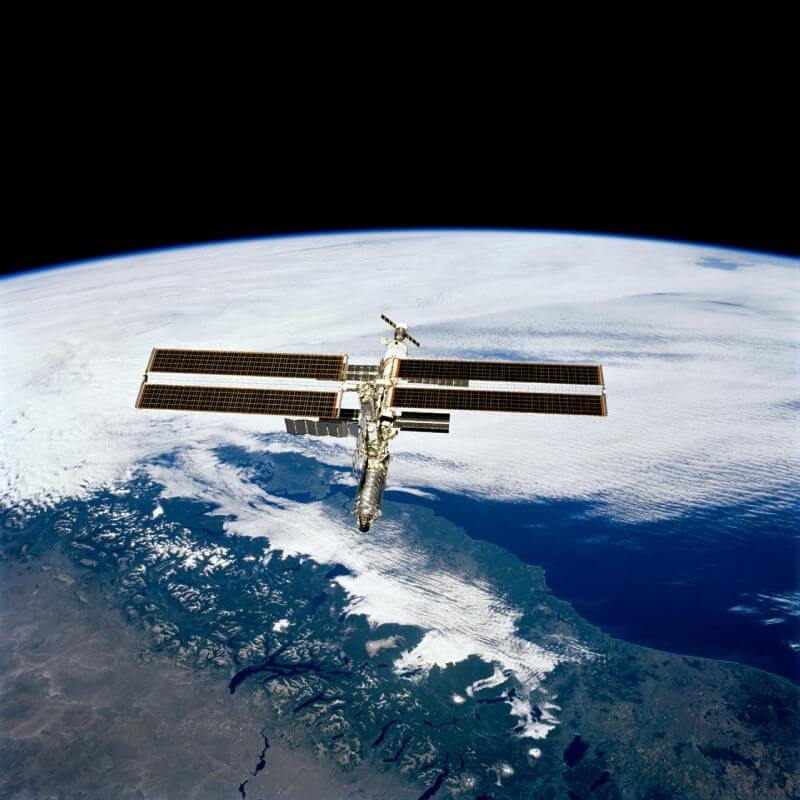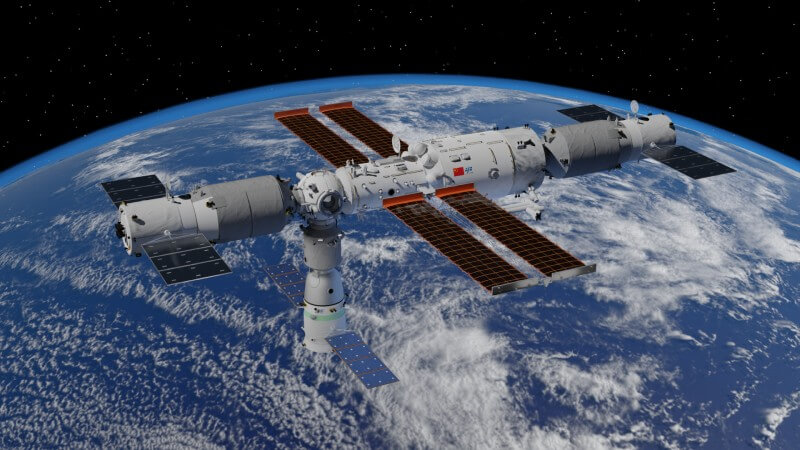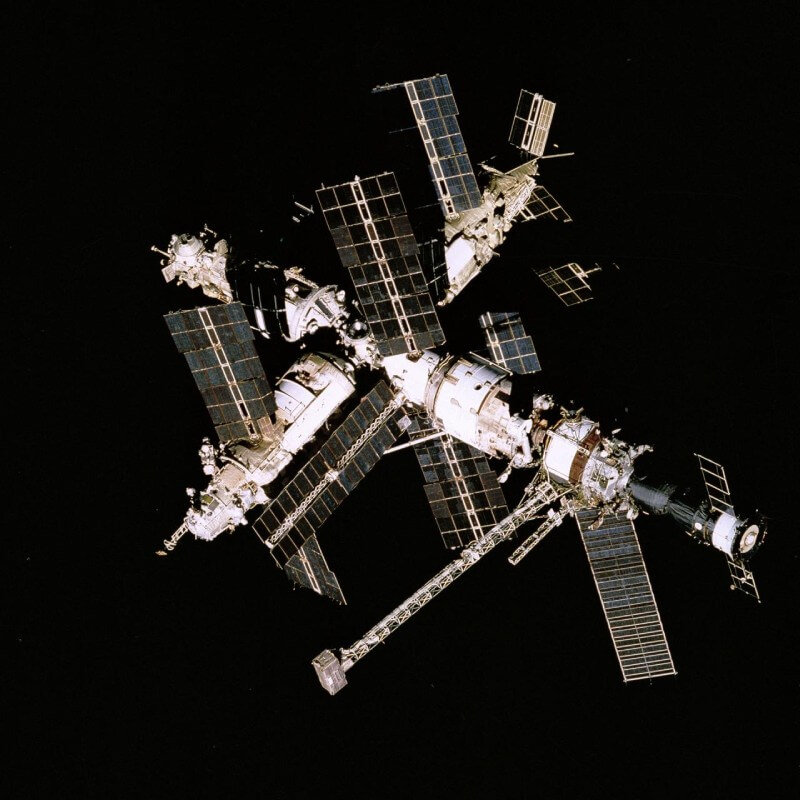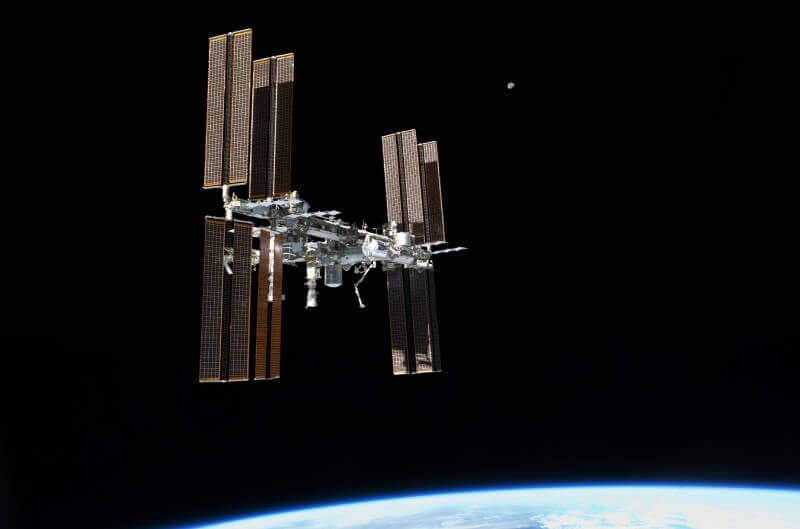Space, the final frontier, has always captivated the human imagination. And within this vast expanse, there exists a marvel that continues to push the boundaries of exploration: space stations orbiting our planet. While the International Space Station (ISS) is the most renowned, it is not alone in its celestial voyage.
As we delve into the realm of these orbiting marvels, we discover that there are currently two active space stations in orbit around Earth: the International Space Station and China’s Tiangong Space Station. Keep reading to learn more about these unique habitats and the fascinating advancements they have made in space exploration.
Current Space Stations Orbiting Earth: An Overview
Imagine gazing up at the night sky and knowing that high above, there are two incredible structures circling the Earth, housing brave astronauts and fueling our insatiable curiosity about the cosmos. These are the current space stations orbiting our planet: the International Space Station (ISS) and China’s Tiangong Space Station.

The ISS, born from a multinational collaboration between NASA, Roscosmos, JAXA, ESA, and CSA, is an engineering marvel that has been continuously inhabited for over two decades. Stretching across the expanse of a football field, it serves as a scientific laboratory where researchers conduct groundbreaking experiments, explore the effects of microgravity on the human body, and even study the possibility of growing food in space.

Tiangong Space Station, launched in 2021, aims to advance China’s space ambitions and pave the way for future lunar and Martian missions. Both of these orbiting habitats are not only symbols of human ingenuity and international collaboration but also gateways to new discoveries and the next frontier of space exploration.
Evolution of Space Stations: A Historical Perspective
Space stations, those remarkable structures that float in the vastness of space, have a rich history of human achievement and exploration. From humble beginnings to cutting-edge laboratories, these orbiting habitats have played a crucial role in expanding our understanding of the universe and paving the way for future space missions.
Here are some of the most significant milestones in the evolution of space stations:
| Space Station | Launch Date | Country | Duration in Orbit |
| Salyut | April 1971 | Soviet | 5.8 years |
| Mir | February 1986 | Soviet/Russia | 15.1 years |
| International Space Station | November 1998 | Multinational | 22.6 years |
| Tiangong | April 2021 | China | 0.2 |

Purpose and Function of Each Current Space Station in Orbit
The two currently active space stations orbiting Earth, the International Space Station (ISS) and China’s Tiangong Space Station (TSS), serve distinct purposes and have specific functions.
International Space Station (ISS):
The ISS is a multinational collaborative project led by NASA, Roscosmos, JAXA, ESA, and CSA. It serves as a research laboratory in space and a platform for international cooperation in scientific experiments and technological advancements. The primary functions of the ISS include:
● Scientific Research: The ISS provides a unique environment for conducting experiments in various fields such as biology, physics, astronomy, and human physiology. Scientists on board the station study the effects of microgravity on the human body, develop new technologies and explore ways to sustain life in space for long-duration missions.
● International Collaboration: The ISS fosters collaboration among different countries, promoting peaceful cooperation in space exploration. Astronauts from various nations work together on the station, sharing knowledge and resources to achieve common scientific goals.
● Technological Development: The ISS serves as a testbed for new technologies and equipment. It helps validate spacecraft systems, life support systems, and advanced robotics that are crucial for future space missions, including those to the Moon and Mars.
Tiangong Space Station (TSS):
China’s Tiangong Space Station is a project developed and operated by CMSA (China Manned Space Agency). Its primary functions include:
● Human Spaceflight: The TSS aims to support long-duration human space missions and serve as a platform for Chinese astronauts to conduct scientific research and technological experiments and gain experience for future space exploration endeavors.
● Space Laboratory: The TSS houses a laboratory module that facilitates scientific experiments in microgravity. These experiments focus on a wide range of disciplines, including biology, material science, and astronomy, contributing to advancements in these fields.
● Future Exploration: The TSS plays a crucial role in China’s ambitions to explore the Moon and Mars. It serves as a stepping stone for the nation’s future space exploration goals and serves as a testbed for technologies and systems required for deep space missions.
Both the ISS and TSS are integral to expanding our understanding of space, advancing scientific research, and preparing for future human exploration beyond Earth’s orbit. Their presence in orbit represents the collective efforts of nations toward pushing the boundaries of human knowledge and space exploration.
Advantages of Multiple Space Stations in Orbit
Having multiple space stations in orbit around the Earth offers several significant advantages:
● Redundancy and safety: Multiple stations provide backup options for astronauts in case of emergencies or technical failures, ensuring their safety and mission continuity.
● Increased scientific capacity: Multiple stations enable simultaneous and diverse scientific experiments, accelerating the pace of discoveries and expanding our knowledge of space.
● Enhanced collaboration: Different stations serve as hubs for international cooperation, fostering partnerships and facilitating knowledge sharing among scientists and astronauts from various nations.
● Training and experience opportunities: Astronauts can rotate between stations, gaining valuable experience in different operational environments and enhancing their skills and adaptability.
● Distributed research infrastructure: Multiple stations allow for focused investigations in different regions of space, facilitating the exploration of specific celestial phenomena and the study of microgravity effects on various organisms and materials.
These advantages contribute to advancing space exploration, scientific understanding, and the ultimate goal of establishing a sustainable human presence beyond Earth’s boundaries.
Future Plans and Developments for Space Stations in Space Exploration
The future of space stations is filled with ambitious plans and groundbreaking developments that will shape the course of space exploration. Let’s take a closer look at some of the upcoming projects and initiatives:
| Project | Description |
| Haven-1 | VAST, a space habitation technology company, plans to launch Haven-1, the world’s first commercial space station, in 2025. |
| Orbital Reef Space Station | Private space companies are collaborating to build the Orbital Reef, a dedicated commercial space station offering unique experiences. |
| Lunar Gateway Scientific Station | NASA’s Artemis program aims to establish the Lunar Gateway, a research station orbiting the Moon, serving as a hub for future missions. |
These visionary projects represent the next frontier in space exploration, pushing the boundaries of human ingenuity and opening new possibilities for scientific research, commercial activities, and space tourism.
Conclusion
In summary, the International Space Station (ISS) and China’s Tiangong Space Station (TSS) are the two active space stations currently orbiting Earth. These stations have revolutionized space exploration, enabling long-term human habitation and conducting groundbreaking scientific research.
Multiple space stations offer several advantages, including enhanced scientific capabilities, increased collaboration opportunities, emergency redundancy, and the potential for space tourism and commercial activities. Looking ahead, future plans involve launching new space stations like the commercial Haven-1 and the Lunar Gateway Scientific Station, further advancing our presence and capabilities in space. As we continue to explore and push the boundaries of space, these space stations play a critical role in our ongoing quest for knowledge and expanding our understanding of the universe.
Frequently Asked Questions
How many space stations are currently in orbit around the Earth?
There are currently two active space stations in orbit: the International Space Station (ISS) and China’s Tiangong Space Station (TSS).
What is the purpose of the International Space Station (ISS)?
The ISS serves as a multinational collaborative project for scientific research, space exploration, and technological advancements. It provides a platform for conducting experiments, gathering data, and studying the effects of microgravity on the human body.
What is the significance of China’s Tiangong Space Station (TSS)?
Tiangong Space Station is China’s first long-term space station and represents their ambition to become a leading space power. It facilitates research, technology development, and international collaboration, with a focus on lunar exploration and deep space missions.
What are the advantages of having multiple space stations in orbit?
Multiple space stations allow for increased scientific capabilities, expanded research opportunities, redundancy in case of emergencies, enhanced collaboration among nations, and the potential for space tourism and commercial activities.

